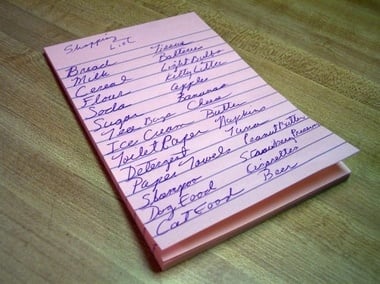I can’t tell you how much money and time I have racked up in trying new apps, paying subscriptions to things like Remember the Milk or Toodledo, or even creating precise taxonomies for tagging my tasks. If you are like me in any way (and you probably are because you read Lifehack.org), I can help out by telling you now that no single application or productivity system will make you more productive. In fact, most of our so-called “systems” tend to get in our way and make us productive at creating productivity stuff. And that’s about it.
It’s a racket
When I first read GTD about 4 years ago my inner geek instantly saw a way to systematize my work and life. With that came an eagerness to look for everyone’s “implementation” and to try out many different ways of setting up my own system. I bought a labeler, filing cabinet, inbox, paper planner thingy, some decent pens, index cards (way too many index cards), and preceded to Get Things Done. Or so I thought. What happened for a good portion of 2 to 3 years was my endless tweaking of a system and search for something better that didn’t really support my work. The system ran me and actually made me scared to use it. It felt like a bottomless pit of empty projects and tasks that I would never look at or review because of their unimportance. All of this brought me to my original point: productivity apps and systems don’t make the man, the man makes the productivity system.
Cutting the fat
So, instead of being buried in a sea of productivity tools and ideas that were not supporting me, for the last year and a half I have been trimming down my system to the most essential and useful. I first went on a paper productivity kick. It was like a detox for a productivity pr0n junky. Keeping projects and action lists with paper allows one to not be confined to a certain set of labels, buttons, and tags. It allows you to just write things down and helps to stay out of your way. Another nice thing about paper productivity is that it isn’t really filled with features and because of that doesn’t move you to “feature-tweak” it. You can read more about the benefits of paper productivity here. While using paper I identified some things that I truly didn’t like that I knew I would need a digital system for like:
due date sorting sorting in general easier manipulation of lists and changing tasks without rewriting everything ability to easily send something by email a place to store notes directly linked to tasks
So, I then found myself a set of tools that met these requirements and allowed me to practice the Getting Things Done system at the minimum. I cut the fat of my productivity system and finally put myself in control of it.
The practical part
If you are like me and have been swimming in a sea of productivity pr0n for too long and want to own your productivity system rather than allow it to own you, here are a few simple steps: And that’s it. It’s important for an information worker to have a set of tools that truly supports her work. But what is just as important is that worker have a set of tools that she sticks with, that she knows and trusts, and that don’t get in her way. Have you settled into a system that supports your work and allows you to get things done? If so, tell us about it in the comments below.
